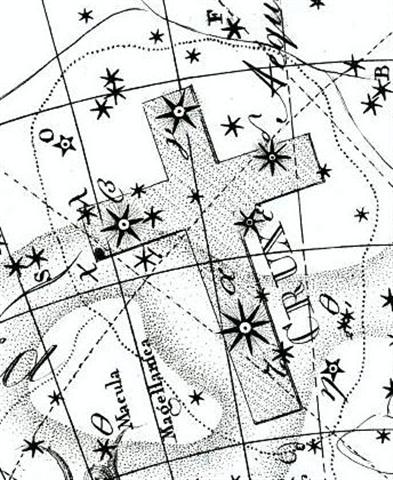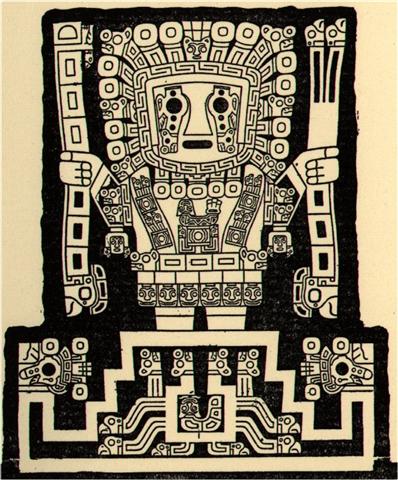We can guess the creator of the Mamari tablet thought it wise to begin his text where according to ancient traditions the 7-day wake after Jupiter (Father Light) was over: ... Midsummer is the flowering season of the oak, which is the tree of endurance and triumph, and like the ash is said to 'court the lightning flash'. Its roots are believed to extend as deep underground as its branches rise in the air - Virgil mentions this - which makes it emblematic of a god whose law runs both in Heaven and in the Underworld ... The month, which takes its name from Juppiter the oak-god, begins on June 10th and ends of July 7th. Midway comes St. John's Day, June 24th, the day on which the oak-king was sacrificially burned alive. The Celtic year was divided into two halves with the second half beginning in July, apparently after a seven-day wake, or funeral feast, in the oak-king's honour ...
In rongorongo times, however, the Pale star (δ) in the Southern Cross - the universally used time-piece tree south of the equator - rose heliacally in day 264, the day before spring equinox. It was a Pale star and not a Pole star.
... 'The Cross of pardon lights the tropic skies'; which is correct for our day, as it is not now entirely visible above 27º 30' of north latitude. It was last seen on the horizon of Jerusalem - 31º 46' 45'' - about the time that Christ was crucified. But 3000 years previously all its stars were 7º above the horizon of the savages along the shores of the Baltic Sea, in latitude 52º 30' ... Pálida was probably the dark eye in the fundament of the Gateway of the Sun at Tiahuanaco, marking where the Sun went down respectively would return half a year later:
How do we know the C text has here referred to the Southern Cross and not to Raven? The question is wrong. The myth keepers kept it all together. Raven should be associated both with the absence of water and with time. The time piece and the black bird were complementary and should not be thought of separately: ... the bird, being sent with a cup for water, loitered at a fig-tree till the fruit became ripe, and then returned to the god with a water-snake in his claws and a lie in his mouth, alleging the snake to have been the cause of the delay ...
|





